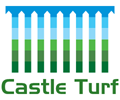Coastal landscapes in Sydney, with their stunning vistas and proximity to the ocean, are highly desirable locations for residential, commercial, and recreational development. However, the harsh coastal environment, characterized by salt spray, high winds, and sandy soils, presents unique challenges for landscaping and outdoor design. Traditional vegetation and turfgrass often struggle to thrive in these conditions, leading property owners to seek alternative solutions that can withstand the rigors of coastal living. Synthetic turf has emerged as a salt-resistant and low-maintenance landscaping solution, offering numerous benefits for beachfront properties.
Understanding Coastal Challenges:
Coastal environments pose several challenges for landscaping and outdoor design, including:
- Salt Spray: Salt spray carried by ocean winds can corrode and damage vegetation, leading to stunted growth and yellowing of foliage.
- High Winds: Coastal areas are prone to strong winds that can uproot plants, scatter debris, and erode soil, making it difficult for traditional landscaping to establish and thrive.
- Sandy Soils: The sandy soils prevalent in coastal regions lack organic matter and nutrients, making it challenging for plants to absorb water and essential nutrients.
- Saltwater Intrusion: In some coastal areas, saltwater intrusion into groundwater can further exacerbate soil salinity, rendering it unsuitable for traditional vegetation.
The Unique Benefits of Synthetic Turf:
Artificial grass sydney offers several advantages that make it an ideal landscaping solution for coastal environments:
- Salt Resistance: Unlike natural grass, synthetic turf is impervious to salt damage, making it an excellent choice for beachfront properties exposed to salt spray and coastal winds.
- Durability: Synthetic turf is highly durable and resistant to wear and tear, making it capable of withstanding foot traffic, pet activity, and adverse weather conditions common in coastal areas.
- Low Maintenance: Synthetic turf requires minimal maintenance compared to natural grass, eliminating the need for mowing, watering, fertilizing, and pesticide applications.
- Consistent Aesthetics: Synthetic turf maintains its lush green appearance year-round, regardless of weather conditions or soil quality, ensuring consistent aesthetics and curb appeal for beachfront properties.
Design Considerations for Coastal Landscapes:
When incorporating fake grass installation into coastal landscapes, several design considerations should be taken into account to ensure optimal performance and longevity:
- Proper Drainage: Adequate drainage is essential to prevent waterlogging and salt buildup on synthetic turf surfaces. Installing permeable base materials and drainage systems can help facilitate the movement of water and minimize salt accumulation.
- Anchoring and Securing: Given the high winds prevalent in coastal areas, proper anchoring and securing of synthetic turf are crucial to prevent uplift and displacement. Securely fastening the turf to the substrate and using heavy-duty edging materials can help ensure stability and longevity.
- Saltwater Resistance: While synthetic turf is inherently salt-resistant, selecting high-quality materials with corrosion-resistant components can further enhance its durability and longevity in coastal environments.
- Integration with Native Plants: Incorporating native coastal plants and shrubs alongside synthetic turf can enhance biodiversity, provide habitat for wildlife, and create a more naturalistic coastal landscape.
Case Studies and Success Stories:
Numerous examples around the world demonstrate the effectiveness of artificial grass in coastal landscapes:
- Beachfront Resorts: Luxury beachfront resorts and hotels often use synthetic turf in their landscaping to create lush green lawns and recreational areas that withstand the rigors of coastal living while maintaining a pristine appearance for guests to enjoy.
- Coastal Parks and Recreation Areas: Municipalities and park districts in coastal regions utilize synthetic turf in parks, playgrounds, and recreational areas to provide safe, low-maintenance outdoor spaces for residents and visitors to enjoy year-round.
- Residential Developments: Homeowners in coastal communities opt for synthetic turf in their front yards, backyard gardens, and rooftop terraces to create sustainable, salt-resistant landscapes that require minimal upkeep and provide a beautiful backdrop for outdoor living.
Environmental Considerations and Future Trends:
While synthetic turf offers numerous benefits for coastal landscapes, it is essential to consider potential environmental impacts and sustainability considerations. Innovations in synthetic turf technology are focused on improving recyclability, reducing carbon footprint, and enhancing water efficiency to ensure minimal environmental impact and long-term sustainability.
Castle Synthetic turf offers a salt-resistant, low-maintenance landscaping solution for beachfront properties, addressing the unique challenges of coastal environments while providing numerous benefits in terms of durability, aesthetics, and sustainability. By incorporating synthetic turf into coastal landscapes, property owners can create beautiful, resilient outdoor spaces that withstand salt spray, high winds, and sandy soils while enhancing property value and enjoyment for years to come. As coastal development continues to expand, synthetic turf is poised to play a significant role in shaping the future of coastal living, offering sustainable solutions for beachfront properties around the world.
For more information contact sales@castleturf.com.au or call 0406 80 86 89

Leave a Reply
Your email is safe with us.